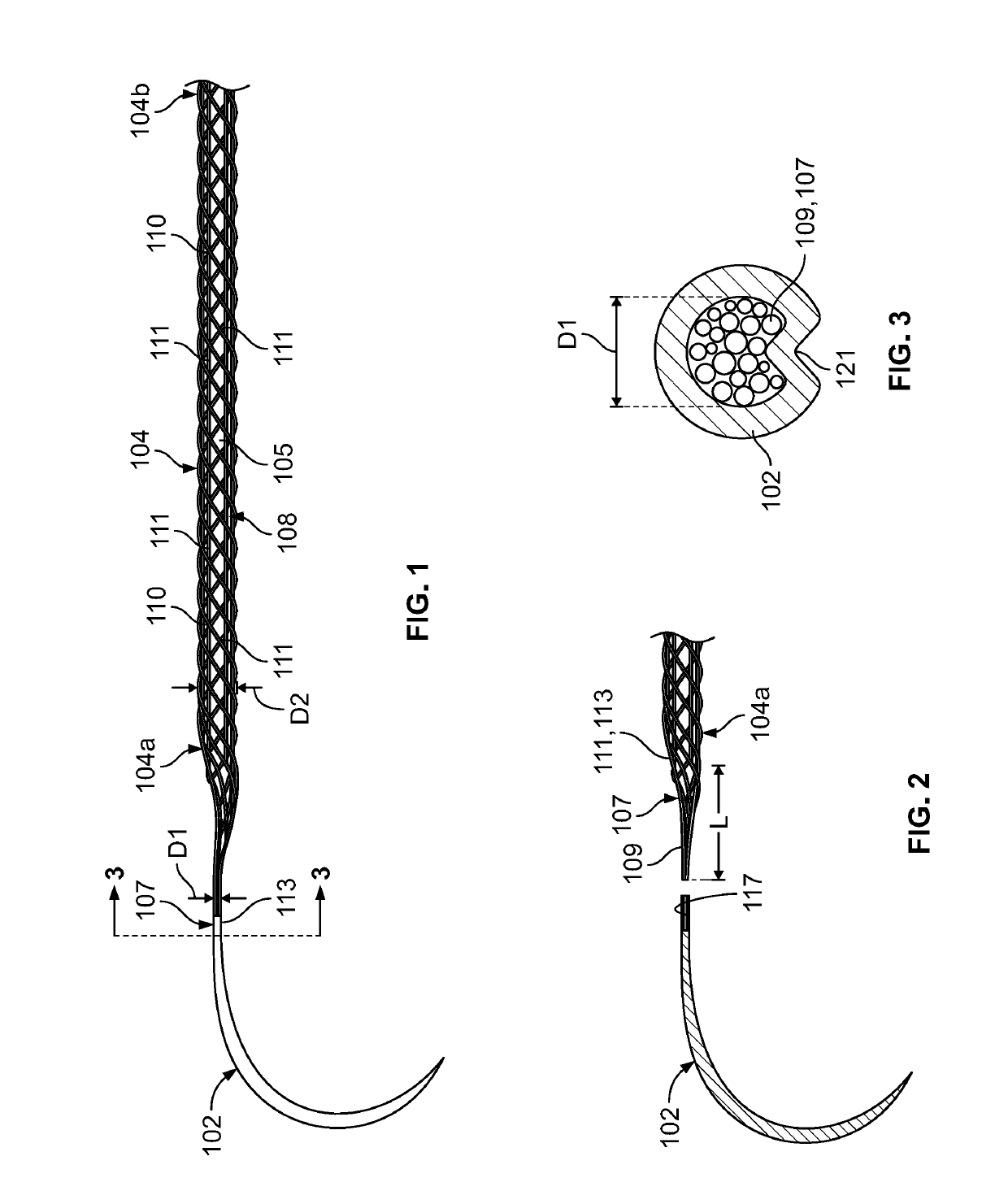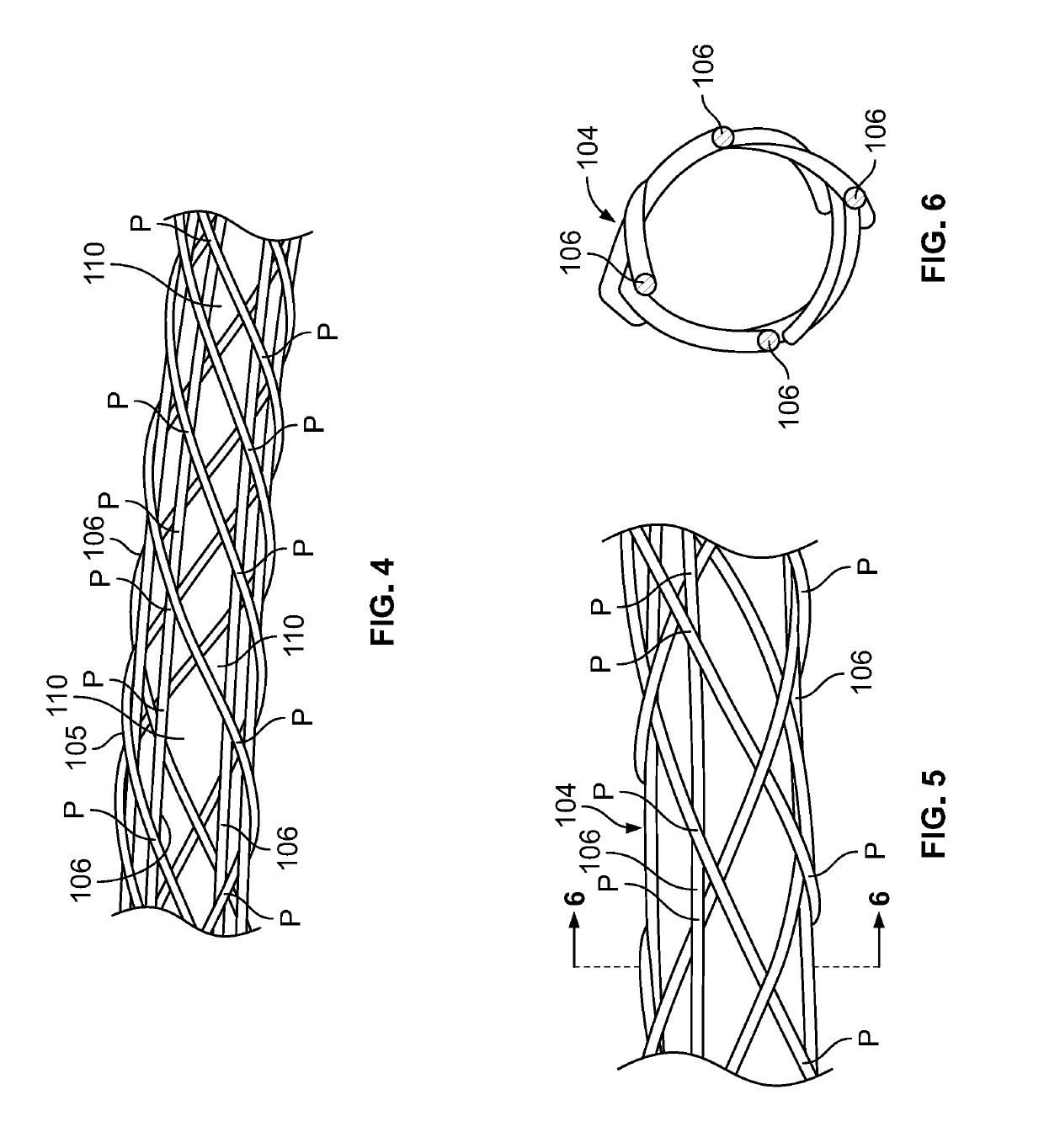Indirect attachment of a needle to a mesh suture
a technology of mesh sutures and needles, applied in the field of mesh sutures, can solve the problems of increasing the likelihood of stress concentration, secondarily reinforcing or redundant, and the construct cannot effectively distribute for
- Summary
- Abstract
- Description
- Claims
- Application Information
AI Technical Summary
Benefits of technology
Problems solved by technology
Method used
Image
Examples
Embodiment Construction
[0016]FIG. 1 depicts a medical device 100 that includes a surgical needle 102 and an elongated suture 104 attached to the surgical needle 102. The needle 102 can be contoured or curved needle with a flattened cross-sectional profile, but needles with generally any geometry could be used. The suture 104 has a first end 104a attached to the needle 102 and a second end 104b located a distance away from the needle 102. The length of the suture 104 in FIG. 1 is representative only, and in practice, the length could be any desirable length as discussed below. The suture 104 can include a plurality of individual fibers 111, only a few of which are identified in FIG. 1 for simplicity. The fibers 111 are braided, knitted, or otherwise woven, extruded, or fused together into a mesh construct defining a plurality of pores 110, which advantageously facilitate tissue incorporation, as will be discussed below.
[0017]In the depicted embodiment, the needle 102 is indirectly attached to the suture 10...
PUM
| Property | Measurement | Unit |
|---|---|---|
| size | aaaaa | aaaaa |
| diameter | aaaaa | aaaaa |
| diameter | aaaaa | aaaaa |
Abstract
Description
Claims
Application Information
 Login to View More
Login to View More - R&D
- Intellectual Property
- Life Sciences
- Materials
- Tech Scout
- Unparalleled Data Quality
- Higher Quality Content
- 60% Fewer Hallucinations
Browse by: Latest US Patents, China's latest patents, Technical Efficacy Thesaurus, Application Domain, Technology Topic, Popular Technical Reports.
© 2025 PatSnap. All rights reserved.Legal|Privacy policy|Modern Slavery Act Transparency Statement|Sitemap|About US| Contact US: help@patsnap.com



